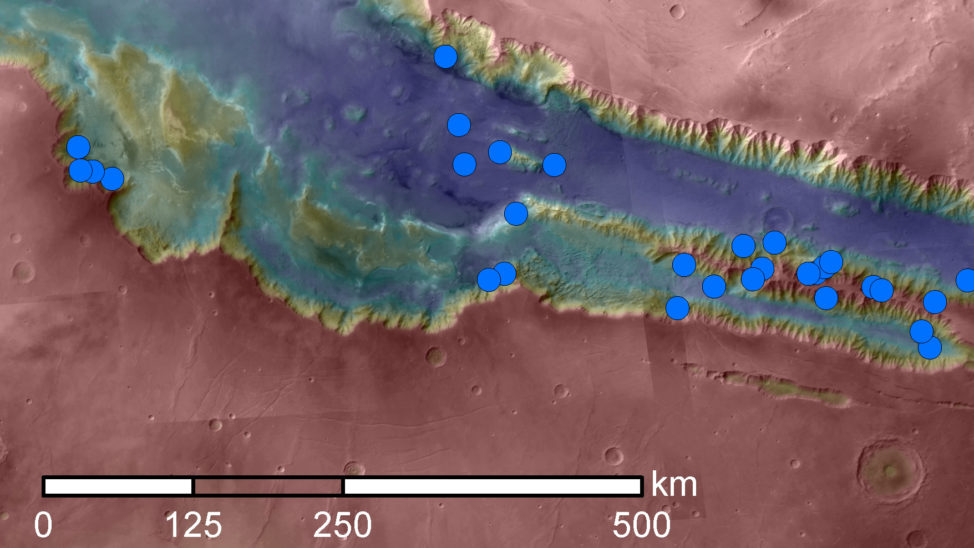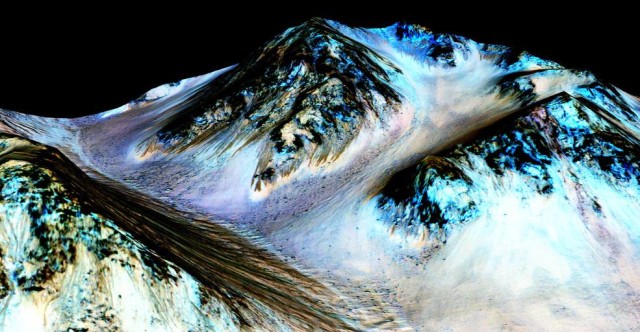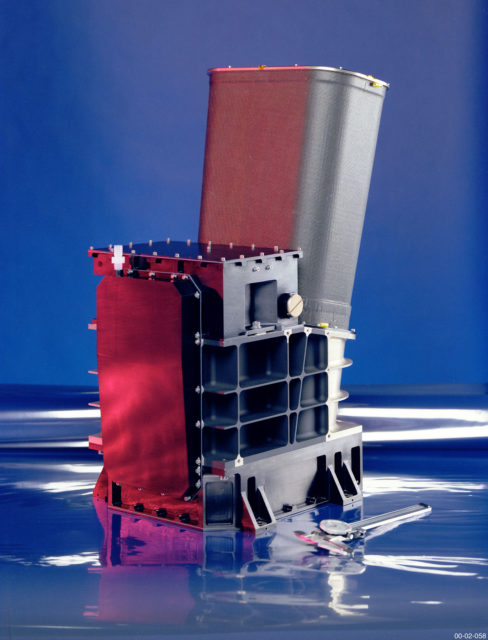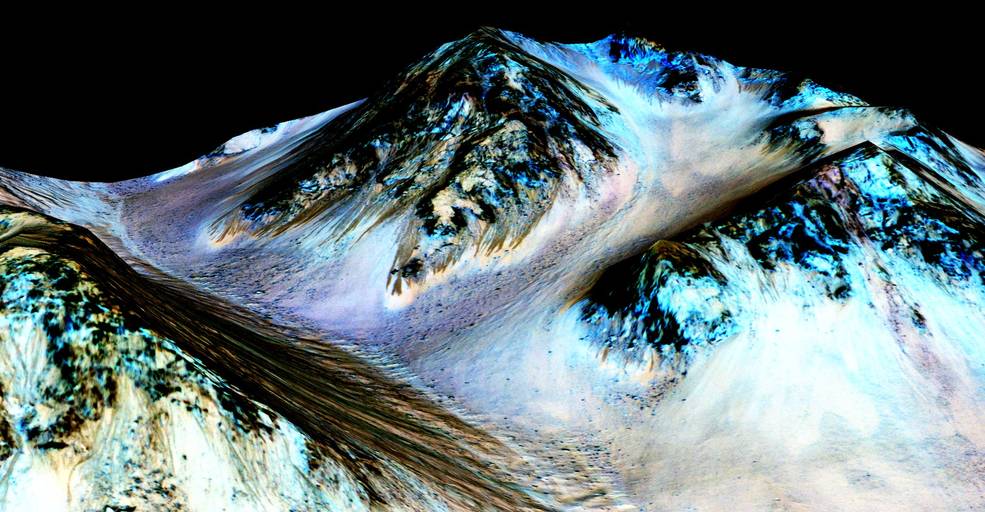
(Blue dots on this map indicate sites of recurring slope lineae (RSL) in part of the Valles Marineris canyon network on Mars. RSL are seasonal dark streaks that may be indicators of liquid water. The area mapped here has the highest density of known RSL on Mars. (NASA/JPL-Caltech/Univ. of Arizona)
Last September, with much hoopla, NASA confirmed evidence of liquid water flowing on present-day Mars.
But a new study using data from the space agency’s Mars Odyssey mission throws some cold water on those findings.
About a year ago, the space agency’s Compact Reconnaissance Imaging Spectrometer for Mars (CRISM) onboard the Mars Reconnaissance Orbiter identified the chemical signature of hydrated salts and minerals in the mysterious dark streaks, called “recurring slope lineae” or RSL.
These streaks can be seen flowing down the slopes of a number of Martian hills and mountains and craters.

These dark, narrow, 100 meter-long streaks called recurring slope lineae flowing downhill on Mars are inferred to have been formed by contemporary flowing water. Recently, planetary scientists detected hydrated salts on these slopes at Hale crater, corroborating their original hypothesis that the streaks are indeed formed by liquid water. (NASA/JPL/University of Arizona)
NASA said that these dark streaks form in late spring, grow through the summer and then disappear by fall.
Scientists believe that these hydrated salts and minerals, called perchlorates, found in the Martian RSLs, lower the freezing point of water just like salt make snow and ice melt at cooler temperatures here on Earth. The salts were thought to help normally frozen water on Mars to flow.
But based on data gathered by the Thermal Emission Imaging Systems (THEMIS) aboard the Mars Odyssey spacecraft, which takes surface temperature measurements by infrared imaging, NASA scientists now believe the RSLs contain about “as much as in the driest desert sands on Earth.”
The space agency says these new findings really don’t contradict the September 2015 findings, since they did identify hydrated salt at these flows, something that has long been considered to be possible indicators for the presence of liquid water on modern Mars.
“Our findings are consistent with the presence of hydrated salts, because you can have hydrated salt without having enough for the water to start filling pore spaces between particles,” explained Christopher Edwards of Northern Arizona University, Flagstaff.
He said that the RSL salts can still absorb water from vapor in the Martian atmosphere without the need for any underground water source.
However, the new surface temperature measurements did provide Edwards and his colleague, Sylvain Piqueux of NASA’s Jet Propulsion Laboratory, Pasadena, California, with an indication of just how much water is present within the RSL streaks.

Thermal Emission Imaging System – THEMIS, One of the scientific intruments aboard the Mars Odyssey. (NASA/JPL)
The study authors say that by measuring just how quickly the surface temperature of small patch of ground heats up during the day and then cools off at night can provide evidence of just how much water, if any, can be found in the spaces between particles of soil or grains of sand.
They also pointed out other factors that can affect just how fast the Martian surface can lose heat. These include determining just how deep moisture reaches into the ground and how much water might present atop the surface.
If the thickness of RSL soil that might contain water is only wafer-thin, then according to the study’s calculations there is only about 3 grams of water for each kilogram of soil, which they say is about the same as some of the driest places on Earth.
But, if layer of RSL soil is thicker, the findings show that the quantity of water per kilogram of soil must be even less, according to the temperature measurements.
Edwards and Piqueux say that while there is a margin of error in gathering temperature data with THEMIS – as much a 1 degree Celsius – this difference was considered in determining the greatest possible amount of either frozen or liquid water in the ground material.
“Some type of water-related activity at the uphill end still might be a factor in triggering RSL, but the darkness of the ground is not associated with large amounts of water, either liquid or frozen,” Edwards said. “Totally dry mechanisms for explaining RSL should not be ruled out.”
A report detailing the findings by Edwards and Piqueux has been accepted for publication by the journal Geophysical Research Letters and is currently available online.























Very Interesting!!